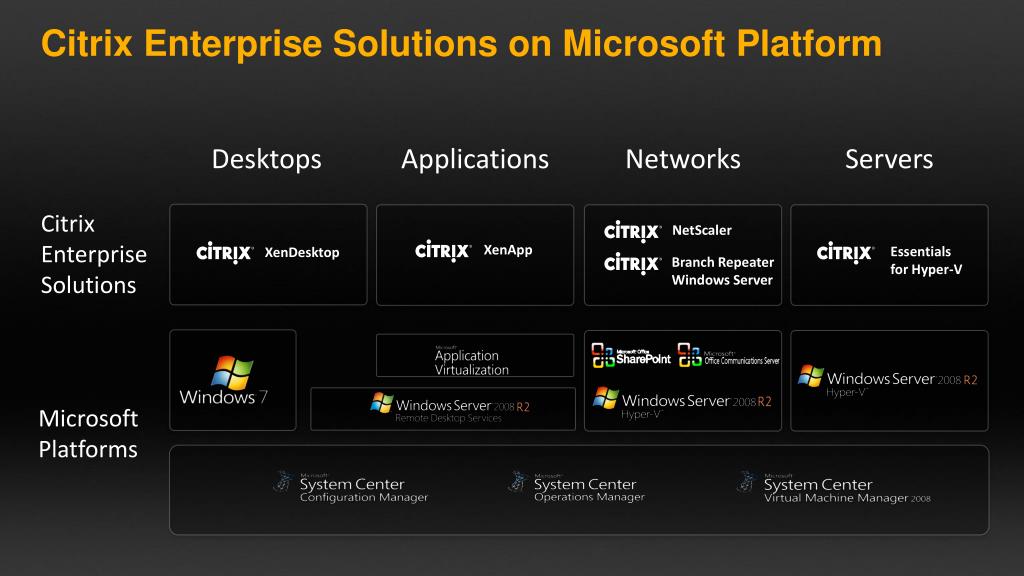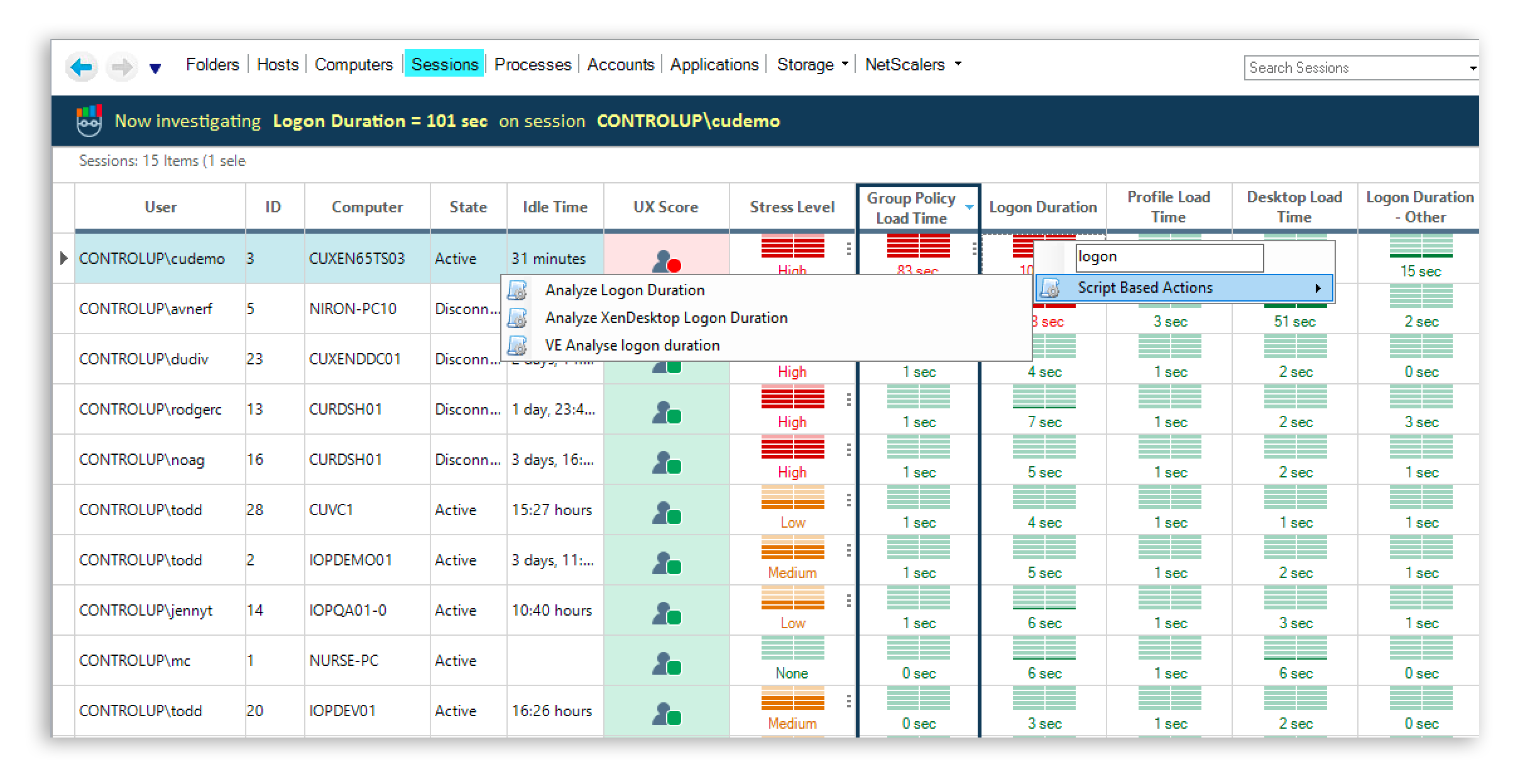
App-V: A Configuration Template for Deploying to Stateless RDS Clients on Citrix Published Desktops with Citrix UPM for Profile Management UPDATED. Updates: Updated to reflect client versions supported. Complete re-work of the script. Added cleanup for LocalVFSSecuredUsers, Removed unused functions, Enhanced used functions. THE ISSUE - APPV RDS client is installed on a couple of our 'proof of concept' CITRIX 6.5 servers (with the PACKAGEINSTALLATIONROOT location pointing to D drive in the hope that it behaves similar to CITRIX streaming profiles and cached application data for 'easier' application management. The App-V integration kit follows the same rules as any other streaming profile package. Install Adobe Reader on the server, like any other published application on the XenApp server. Name the application resembling the app-v application you wish to stream with App-V. This example uses Adobe Reader.
Applicable Products
- XenApp 6.5
- XenApp 6.0 for Windows Server 2008 R2
- XenApp 5.0 for Windows Server 2008
Objective
This article describes how to set up XenApp to launch App-V v4.x, set up the App-V Integration Kit conduit streamed to client, applications, and tips and example scenarios that may be helpful to the users.
Requirements
To use App-V applications you must have the following on XenApp:
Microsoft App-V v4.x Environment (Microsoft Application Virtualization Resource Kit Tools)
An application sequence for App-V. This is the desired application the user created to be used for App-V. This folder also includes a *.osd file containing the sequence information. The application sequence is very similar to the Citrix streaming profile concept, where XenApp uses *.profile file. Even though they are similar, the way they are handled is completely different.
Citrix App-V Integration Kit - DOWNLOAD
Instructions

Complete the following steps to set up XenApp to launch App-V:
Copy the App-V integration kit folder to the shared location of your profiles.
The App-V integration kit follows the same rules as any other streaming profile package.Install Adobe Reader on the server, like any other published application on the XenApp server.
- Name the application resembling the app-v application you wish to stream with App-V. This example uses Adobe Reader.
Select the options shown in the following screen shot. This causes the application to have a fallback method if the App-V client is not installed on the client machine that will access the published application.
Browse for the App-V integration kit.
In the Extra command line parameters field, enter the App-V command to launch the adobe reader sequence for App-V.
appvcontentAdobe ReaderAdobe Reader 9.0 12.0.6425.0000.osdNote: This is not a XenApp command, but this is an App-V command you can run with the App-V client installed to run App-V sequences. It can be used by itself on the user computer to make sure App-V is working correctly with the desired application.
- Browse to the location of the application installed on the server. Remember this is a fallback in case the App-V client is not installed on the client machine.
Add list of servers where application will be located for the published application.
Assign list of users to the applications.
- Set up Icon, shortcuts, and menus as desired. It is recommended to customize the icon to match the application the App-V conduit will execute.
A very easy way to locate the icon of the desired application is to browse where the .osd file is located. You should see an icon folder with all the available icons for that application. Make the changes and save your profile.
Conclusion
After following this setup, the application should be viewed from the Web interface or Program Neighborhood Agent. There are certain important points users must be aware of:
- When the user launches the application, the off-line plugin on the server calls the App-V client using the following command:
C:Program FilesMicrosoft Application Virtualization Clientsfttray.exe' “appvcontentAdobe ReaderAdobe Reader 9.0 12.0.6425.0000.osd”
This command calls the App-V client and launches the application sequence (*.osd file). XenApp does not stream App-V application; it only helps on the launch. The streaming is still being done from the App-V system. XenApp helps give more flexibility of how App-V applications can be handled. Because App-V is called, not streamed, certain XenApp features like Offline or Content Redirection cannot be used. In this case, the user needs to work with the App-V server settings.
If streaming to server is desired, then same settings apply, but on the server machine. Still, the conduit calls the App-V client installed on the user machine. Microsoft App-V does not stream to server.
- If errors appear when trying to launch applications, use the App-V command described above to test and confirm if the problem is App-V. The command can easily find the location where the problem is occurring.
Additional Resources
CTX126082 – How to Sequence an App-V Virtual Application and Stream XenApp Server to be Published Seamlessly to Users.
There is a great new whitepaper released by Microsoft dealing with different deployment scenarios when it comes to Citrix products. As Citrix announced the end of life for their Application Streaming – quite a few people have started to migrate over to App-V 5.
Unfortunately – App-V 5 is a bit more work (infrastructure wise) to get started and at the moment it is a bit slower aswell.
There isn’t any promise by Microsoft that this has improved in App-V 5.0 SP2, however thinking logically one could assume that all customer cases raised before App-V 5.0 SP2 will hopefully have made the product better.
So, what can we do for all the environments where we today suffer from a poor launch or publishing refresh experience?
1. Disable background staging of the registry to on-demand.
This may reduce the CPU-load!
Set the following registry key;
Appv 5.0 And Citrix Integration All About Citrix Access
Source: App-V: On Registry Staging and how it can affect VDI Environments
2. Improve streaming performance by using IIS caching
Ingmar has created a great article on howto enable IIS to cache App-V files (which usually are large and thereby excluded from cache).

See his complete article; Microsoft App-V 5.0 – Streaming via HTTP
3. Use SMB 3.0 if you aren’t using a web-server.
Its fast. See the proof here at Xenapp-blog – Citrix XenServer – Make your network 10x faster or at the Citrix-blogs. Aidan has explained even more benefits for Windows Server 2012 R2 which kicks up the performance even more.
Appv 5.0 And Citrix Integration All About Citrix Workspace
Migrating away from the old legacy (yes, they are legacy now) Windows Server 2008 R2 servers to take the benefit of even faster performance when it comes to file-transfer.
A great collection of Microsoft resources;
4. Use Global Refresh and disable User Refresh
Once the application is actually published to a client the performance impact isn’t usually that bad with App-V 5. If you deploy applications globally to a machine the provisioning part is moved away from the user context and to the machine context. By default though a option is set to perform a Global Refresh once a user logs on. If that is disabled, we completely remove that Publishing operation from the logon process.
Sample command-line,
5. Set App-V specific process within the LogOffSysCheckModules Registry key
Appv 5.0 And Citrix Integration All About Citrix Cloud

This is an oldie, but still valid. Citrix maintains a list of processes that it doesn’t consider to worth keeping the session alive for. Usually what happens is that sessions are just never logged off and the servers get full, without any active workers on it.
Process to include in the key;
Source;
